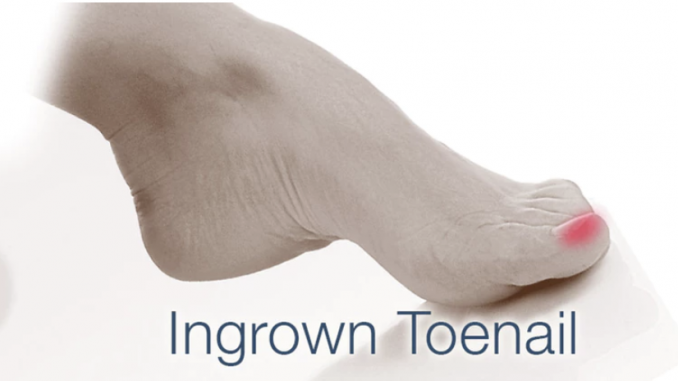
What is an Ingrown Nail?
Well, to be accurate, an ingrown toenail is a condition in which the toenail penetrates the skin down the side of the nail, becoming embedded as the nail grows (onychocryptosis). This sharp corner digs into the flesh causing pain, irritation and at times infection too. The nail becomes tender to any pressure.
This should not be confused with other painful nail conditions such as involuted nails, or the presence of small corns, callus or debris down the nail sulci (grooves either side of the nail plate) or under the nail plate itself.
What causes an Ingrown Nail?
The most common cause is cutting the nail incorrectly. Nails that are cut too short and into the side may leave a sharp edge that will pierce the soft skin at the side and start the process of an ingrown nail.
The shape of the nail can make a person more susceptible to the condition. In the case of involuted nails which are nails that are curled in, the rate of occurrence is much higher.
Excessive sweating may soften the groove which also makes it easier for the nail to penetrate. Washing and soaking the foot in warm water for long periods may have a similar affect.
Certain activities may also contribute towards this condition as in the case of climbing down a hill. This will create extra pressure on the tip of the toes. Any shoes that are tight and that are causing over-crowding of the toes may make matters worse.
Symptoms of an Ingrown Nail
At first there is a dull pain that quickly turns into a sharp pain which is increased by pressure. Later the pain becomes severe with throbbing and if the piece remains inflammation sets in and the area becomes red in colour, swollen and warm to touch.
In certain cases the condition deteriorates and the appearance of excess tissue is apparent. This is called granulated tissue and is highly vascular, bleeding very easily.
Frequently the nail groove is infected and pus may escape from where the splinter has penetrated the tissue.
Treatment for an Ingrown Nail
Visit a Chiropodist/Podiatrist for the removal of the splinter. This is relatively painless procedure depending on how severe the problem is.
Where there is inflammation, this needs to be addressed. The foot needs to be soaked for about 10 minutes in warm water and a handful of salt. This will help to reduce the infection. An application of antibiotic will speed up the recovery.
The granulated tissue will have to be reduced either by the application of 90% silver nitrate or by excision under local anaesthetics.
In severe and persistent cases a minor surgical procedure called a partial nail avulsion will have to be undertaken whereby the whole side section of the nail is removed and the root of that section is destroyed so that it does not grow again.
Recommendations for an Ingrown Nail
• Cut your nails in the correct manner with quality nail nippers such as a Podopro Nippers, not too short and avoid cutting into the corners.
• Wear the right shoes making sure the toe box is not too narrow or too shallow, therefore reducing the pressure exerted on the toes.
• Relaxed and soft nail grooves should be treated with surgical spirit. However, hard callus and corns down the side of the nail can be treated with Gehwol med Nail Softener to relieve painful pressure.
• Prepare your feet when undertaking physical activities, using padding such as Epitact Digitops or Silipos Gel Tubes for protection.

Leave a Reply